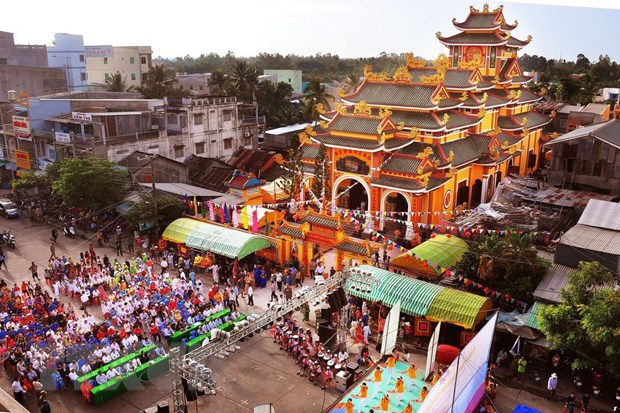
A complex of tombs and temples of Đỗ Công Tường has been recognised as a national relic site by the Ministry of Culture, Sports and Tourism. — VNA/VNS Photo Nguyễn Văn Trí
ĐỒNG THÁP — A week of culture and tourism began on Wednesday in Cao Lãnh City in the southern province of Đồng Tháp, with the participation of Mekong Delta provinces and cities including HCM City and Hội An.
The annual tourism event is held to strengthen tourism co-operation between Đồng Tháp with other provinces and cities in the Mekong Delta as well as the rest of the country.
It is also an opportunity to promote the area's tourism potential, and the traditional culture and specialties of Cao Lãnh City.
“We are very impressed with the tourism development in Hội An (in the central province of Quảng Nam),” said Võ Phan Thành Minh, vice chairman of Cao Lãnh’s People Committee. “The province agreed to organise a cultural and tourism event in Cao Lãnh City to widely promote the image and cultural beauty of the city.”
On this occasion, the Ministry of Culture, Sports and Tourism issued a decision to name a complex of tombs and temples of Đỗ Công Tường, a local man as a national relic site.
The temple is located on Lê Lợi Street in Ward 2 where residents come to burn incense to commemorate the merits of Đỗ Công Tường.
Đỗ moved from the central region to settle in Mỹ Trà Village in 1817 under the Gia Long dynasty.
Đỗ, who cleared wild land and planted many fruit trees, realised that the area's rivers and roads would suit the trade of fruit and agricultural products. He gathered many people in the area and set up what is known today as the Cao Lãnh Market.
The complex includes a temple, guest houses and tombs which were built with solid materials and an architectural style of the Nguyễn Dynasty in the 19th century.
The anniversary of Đỗ Công Tường’s death is held annually in lunar June on the 8th to 10th. This year, it will be a highlight of the culture and tourism event.
Many other activities such as tài tử (southern amateur singing) performances, calligraphy writing on lotus leaves, cock-fighting, folklore games and photo exhibitions will be included.
The week's event is held to promote the area's cultural elements, natural resources and traditional handicraft villages, and to help Đồng Tháp Province become an attractive destination and an example to other localities.
Đồng Tháp and Quảng Nam have many similarities, especially tourism development based on cultural values. They also both link tourism with environmental protection and agricultural production experiences.
A display about Cao Lãnh – Hội An will be set up to promote the culture and tourism of the two localities and to strengthen their relationship.
The tourism week will end on July 14. — VNS